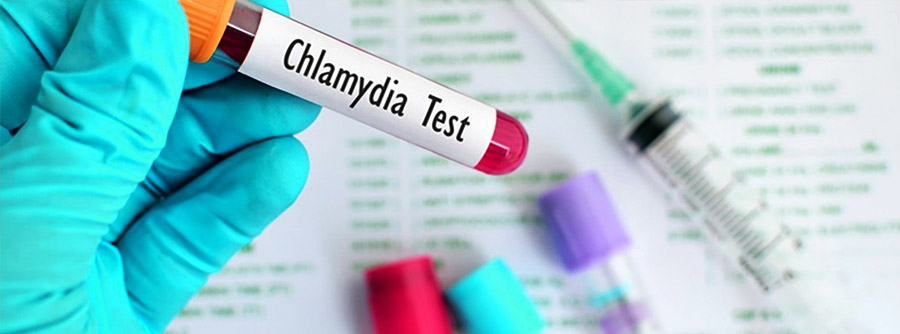Chlamydia: Overview of Symptoms, Diagnosis, and Treatment

Chlamydia trachomatis is a bacterium that causes a sexually transmitted disease. It is an infection that can affect the genital organs of women and that usually occurs without symptoms, but that can cause complications with important consequences. It is very common and it is estimated that in the United States there are between 2 and 3 million infections annually. Chlamydia infection can be transmitted through vaginal, oral, or anal sex. It can also be transmitted from mother to child in a vaginal delivery. Chlamydia can infect the penis, vagina, cervix, anus, urethra, eyes, and throat.
Symptoms and signs
Chlamydia is known as the "silent" disease because most infected people have no symptoms. If symptoms appear, they do so between 1 and 3 weeks after infection. Only one in four women with chlamydia will have symptoms. The infection usually begins in the neck of the womb producing cervicitis, an inflammation of the cervix. In these cases, the doctor observes the swollen neck of the womb, redder due to an increase in blood supply, swollen and more friable, that is, it bleeds easily when touched.
Symptoms of women
- Increased vaginal discharge
- pain or stinging when urinating
- Increased frequency of urination
- Pelvic pain
- pain with intercourse
- Bleeding after sexual intercourse
Symptoms of men
- Burning sensation when urinating
- Discharge from the penis
- Testicular pain
- Rectal pain or discharge
Diagnosis
The diagnosis is usually made by cell cultures. They are different from the usual cultures since chlamydia is a bacterium that lives inside cells and therefore taking the usual sample to detect other infections such as fungi does not detect chlamydia.
Treatment
As it is a bacterial infection, the treatment is antibiotic and the treatment efficiency is also high. There are three antibiotic regimens that are effective against chlamydia. One of them is in a single dose and others have a longer duration.
It is important that the full treatment is done and not abandoned when symptoms improve to make sure the infection is completely eradicated. A follow-up visit should be scheduled to confirm that the infection is completely gone. The sexual partner must also do the treatment to prevent the infection from spreading again. It is common for women to become infected again if their partner does not receive proper treatment.
Complications
If chlamydia is not treated, the infection can progress and cause reproductive problems. In up to one in five affected women who do not receive treatment for chlamydia, the infection can follow an upward path and from the cervix reach the body of the womb, the fallopian tubes and lead to pelvic inflammatory disease. The consequences of this infection can be significant. Some women experience chronic lower abdominal pain after infection. Others may have sterility caused by the possible obstruction of the fallopian tubes as a result of the scars produced. The risk of ectopic pregnancy after pelvic inflammatory disease is greater due to the alteration in the functionality of the fallopian tubes and therefore a pregnancy can settle in an abnormal place such as the tube or ovary.
In men, chlamydial infection can be complicated by epididymitis, consisting of inflammation of the epididymis and which can also cause subsequent sterility.
Pregnancy
There is evidence that women infected with chlamydia during pregnancy have an increased risk of preterm delivery. In addition, a direct relationship between chlamydia-infected women and low birth weight of their babies has also been described.
- The infection can be passed to the fetus at the time of delivery through direct contact with maternal blood or vaginal fluids. This infection can cause neonatal conjunctivitis or pneumonia.
- Conjunctivitis produces an inflammation of the eyelids and an ocular discharge that generally appears within the first 10 days of life.
- Neonatal chlamydial pneumonia begins with a dry cough three to six weeks after birth. Little by little the cough becomes more productive and respiratory distress may appear.
Prevention
Like all sexually transmitted diseases, prevention is carried out with the use of a condom during sexual intercourse. Secondarily, an early diagnosis can be made in women at risk despite not having symptoms due to the fact that it is a basically asymptomatic disease.
(Updated at Apr 14 / 2024)